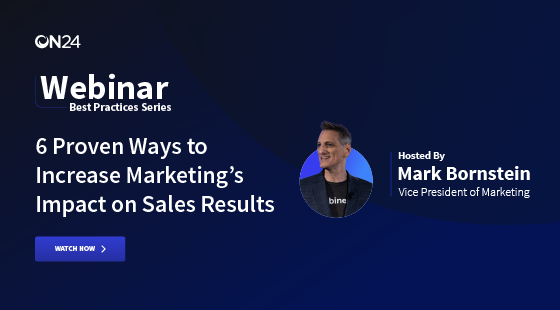Sales has always been a demanding profession, and this has never been more true in the age of virtual sales calls. Selling at its essence marries the dichotomies of personal connection and business persuasion — you must develop a relationship with your prospect, provide credible advice and practically help them solve their business challenges – and at the same time, you have to be personable, professional and empathetic, consultative and trusted, forward-looking, perceptive, quick on your toes and insightful.
Sellers should listen, but be able to guide a conversation. Sellers also have to draw upon a team to establish organizational credibility, deliver a valuable buyer’s journey and provide the best possible solution to their customers.
Often, the best way to make this happen is to show up in person, shake their hand and have a meeting with all the key stakeholders in the buyer’s organization. Handshakes did more than just show that you’re a nice person. They helped build your relationship and provide you with a better understanding of what the prospect needs. In person, you can read the room, establish your presence and credibility, and more easily adapt the conversation for any curve balls thrown your way.
At least, that was the best way to build and close a deal. Now, it’s all virtual. And, as salespeople, we need to adapt and learn how to win digital-first sales practices, real-time selling and social networking. Most of all, we need to develop our ability to create a meaningful virtual connection — our Digital EQ if you will, the virtual counterpart to Emotional Intelligence — and we need to develop it NOW.
So how can we get started? Let’s start with the Virtual Sales Call, and look at four ways reps can evolve sales best practices virtually and accelerate deals.
1) Preparation + Practice = Mutual Respect

So just how to conduct a virtual sales call? The first – and possibly most – important element for any sales call is the research. This is true for both in-person and virtual meetings. You ought to know both professional and personal details like where your prospect went to school, what they studied, where they’ve worked previously, what they work on at their current company and how your solution would fit into their overall business challenges. We do this not just because it’s good sales best practice, but because it’s respectful of the prospect’s most valuable asset: their time.
In addition to basic research, though, you’ll need to know your prospect’s virtual preferences.
-
- Are they accustomed to, or even like, video meetings?
- Do they have a preferred meeting tool, or are they proficient with yours?
- What about a stable internet connection, to allow for multiple video call participants?
- Are they familiar with the systems, or will they need some guidance from your side?
More to the point: are you ready?
-
- Does your internet connection have issues?
- Have you met with your SDR or AE to get the latest information on the prospect?
- What about a dry-run of your presentation?
- Are you familiar with the best practices of virtual sales calls?
- Do you know the content they’ve consumed from your organization or any questions they may have asked during prior virtual events?
Ask your buyer and yourself these questions ahead of that big virtual meeting. It’ll save you a lot of headaches and, more importantly, show that you care and value your prospect’s time.
2) Have a Plan

During an in-person meeting, a talented salesperson can usually wing surprises or complex situations, like an extra five to six attendees. Not so with virtual selling. Virtual selling moves fast and you need to have a plan — if not a detailed agenda — ready before going into your call.
Attention spans are diminished when you’re distant or not personable, meaning you need to have as tight of a presentation as possible.
-
- Take the time to go over your presentation and find areas where you can cut.
- Work in opportunities for engagement during your presentation where possible – ask questions and leverage the meeting tool chat function for input from the attendees.
- If you’re driving a live webinar for a buying committee, leverage polls, surveys and other interactive engagement tools to stand out from the competition and keep the audience’s attention.

3) Think on Your (Virtual) Feet with Digital Intelligence

Virtual selling is much, much different than in-person selling. It can be more casual or more intense, depending on your customer. Sometimes you can wear a baseball cap and t-shirt (depending on the opportunity or attendees) to reflect both your company brand and your personal approach; other calls may be more formal. Always, though, sales best practices suggest that you try to strike that balance between professionalism and being yourself and being authentic with your buyers. Every virtual call will require trying to maintain the attention of several professionals on a buying committee.
Keeping buyers engaged means you need to develop what we like to call “Digital Intelligence.” Digital Intelligence is a simple concept to understand:
-
- Take digital cues and interactions to gauge interest
- Assess how a prospect is feeling or reacting, and
- Get a better read of how the meeting is going overall.
Working your digital intelligence muscles can be as simple as pushing a poll or asking how the attendees feel so far about the session and content. It can also take more subtle forms, for example:
-
- Are attendees keeping their video on or turning it off mid-call?
- Do they have high-quality audio or is it a bit choppy, leading to possibly missing parts of the conversations?
- Are your attendees open to engaging in conversation about their remote or home office?
Think about what you can see and incorporate if they’re on video, and maybe start by setting the stage with some context on your own office environment. For example, if they’re in a home office they might enjoy a compliment on how well it’s been set up or a small conversation about a jersey or instrument they have hanging in the background.
This is also important if your prospect isn’t in a home office. For example, if you notice a child’s drawing in the background, ask if they have children and how they’re handling working from home. And, it might just be helpful and very real to commiserate over shared virtual mishaps like loud pets, bad internet connections and other working from home issues many experiences every day. In other words, it’s about going above and beyond for your customers.
Building out Digital Intelligence is critical for putting your audience at ease, while also crafting a relationship, credibility, and building on both your personal and professional brand.
4) Accelerate the Sales Cycle Without the Meeting

Now the meeting is over and the prospect is interested in your solution and would like more information. That’s great, right? Book another meeting? Well, in a virtual situation, it’s not just about booking meetings. It’s about learning more about your prospect and drawing out those pain points that, maybe, they’re not ready to share with you — or they themselves are unaware of — while learning more about your product or service.
Often, that means extending trust, stepping back and letting buyers dictate the pace of their own journeys. The problem here is that the success of their self-propelled journey entirely depends on two things:
- The content you have prepared for their unique journey.
- The holistic digital experience you have prepared just for them.
Work with your marketing team to create these self-propelled journeys with crafted digital experiences. The experiences you create should be matched to the different stages of the buying cycle and address any common pain points relevant to your prospects, business and industry. If you want to take things to the next level, create some bespoke landing pages and content hubs, with personalized video messages and other helpful content- relevance will cut through the digital noise, keep prospects engaged with your content and familiarize themselves with your company at their own pace outside of a meeting.
Providing an on-demand content experience is especially important in a virtual world. After all, not every professional working from home means they are as available as they would be otherwise. Give them the power to control their own journey and review your content in their own time so they can become more familiar with your brand, product and solutions. The rich network of experiences you have enabled for your prospect will create a compelling and winning journey all animated by the new power of digital connection.
That’s where Digital Acceleration meets Deal Acceleration. Be well and safe, and Good Selling!
